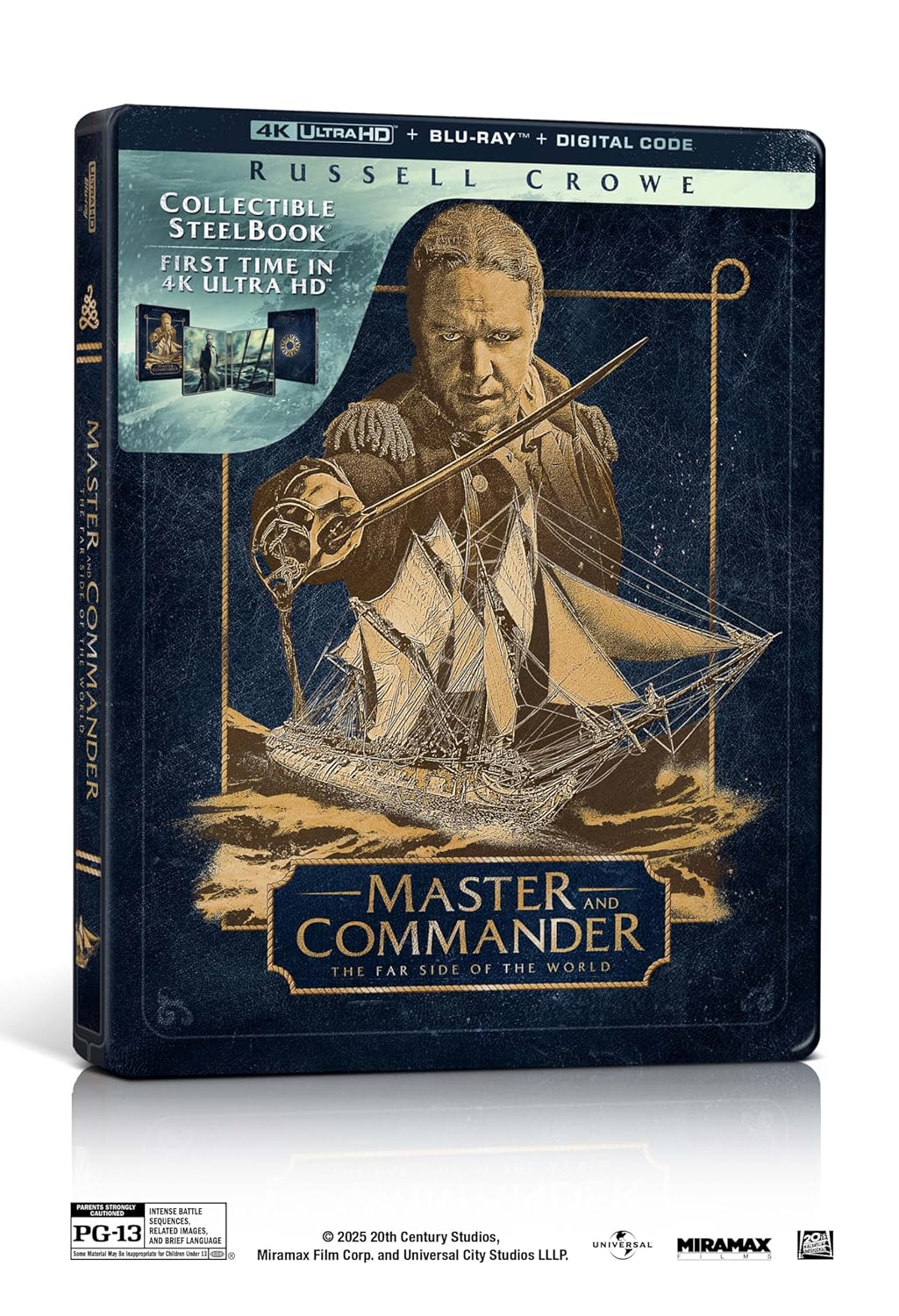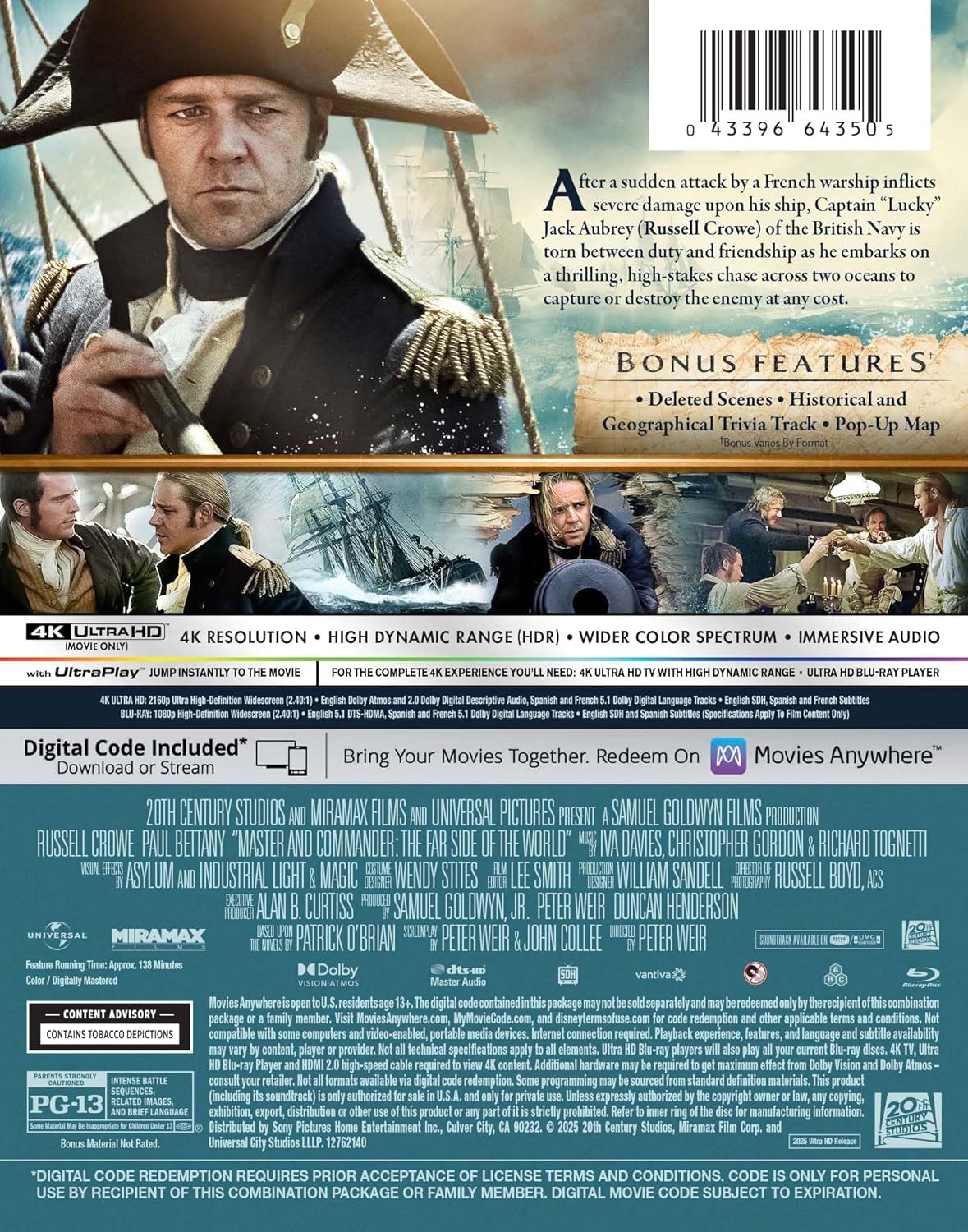Master and Commander – The Far Side of the World (4K UHD Steelbook Review)
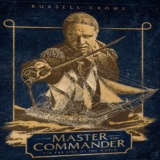 When Master and Commander: The Far Side of the World hit theaters in 2002, it was something of a quiet giant. It didn’t explode at the box office in the way a $150 million film typically aims to, but those who saw it immediately recognized its depth, sophistication, and attention to detail. Peter Weir’s film was a critical darling, earning 10 Oscar nominations and winning two, including Best Cinematography and Best Sound Editing. Still, it was often labeled “slow” by general audiences who were perhaps expecting something closer to Pirates of the Caribbean, which had launched around the same time. What they got instead was a meticulously crafted historical drama about leadership, loyalty, and life aboard a Royal Navy ship in the Napoleonic Wars.
When Master and Commander: The Far Side of the World hit theaters in 2002, it was something of a quiet giant. It didn’t explode at the box office in the way a $150 million film typically aims to, but those who saw it immediately recognized its depth, sophistication, and attention to detail. Peter Weir’s film was a critical darling, earning 10 Oscar nominations and winning two, including Best Cinematography and Best Sound Editing. Still, it was often labeled “slow” by general audiences who were perhaps expecting something closer to Pirates of the Caribbean, which had launched around the same time. What they got instead was a meticulously crafted historical drama about leadership, loyalty, and life aboard a Royal Navy ship in the Napoleonic Wars.
Film 




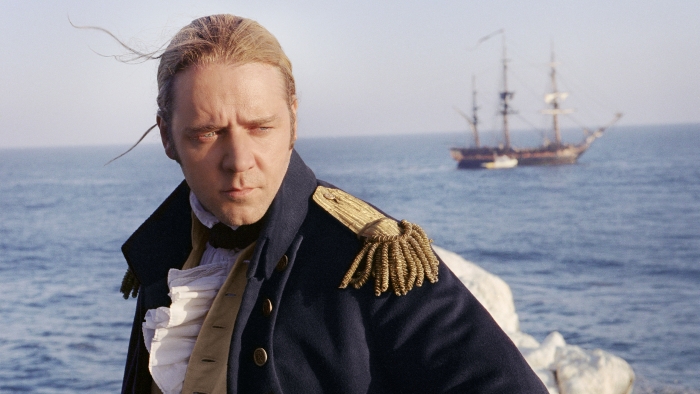
Story and Setting
Adapted loosely from the novels by Patrick O’Brian, the film weaves together elements from several books in the Aubrey–Maturin series. The story follows Captain Jack Aubrey (Russell Crowe) as he commands the HMS Surprise in pursuit of a superior French warship, the Acheron, across the vast and unpredictable waters of the Atlantic and Pacific Oceans. The premise is straightforward, but the narrative’s power lies in its restraint. This isn’t about naval battles for the sake of spectacle—though the few that appear are stunning—but about the toll of command and the lives shaped by the sea. It’s a richly immersive experience, trading constant plot movement for mood, realism, and character.
Acting and Character Work
Russell Crowe delivers one of his most nuanced performances as Captain Jack Aubrey. Coming off his Oscar win for Gladiator and his lauded turn in A Beautiful Mind, Crowe could’ve easily leaned into bravado, but instead he balances charisma with quiet resolve. Aubrey is both a leader of men and a deeply human figure—capable of warmth, loyalty, and error.
Opposite him is Paul Bettany as Dr. Stephen Maturin, the ship’s surgeon and Aubrey’s closest friend. Bettany’s performance grounds the film in thoughtfulness and curiosity; his scenes offer philosophical counterbalance to Aubrey’s militaristic focus. Together, they form one of the most compelling platonic duos in modern cinema. Their conversations—ranging from botany to strategy—are as gripping as cannon fire, and just as crucial to the film’s emotional stakes.
Direction and Style
Peter Weir’s direction is a masterclass in subtlety and control. Known for The Truman Show and Dead Poets Society, Weir brings an almost documentarian’s eye to Master and Commander. The ship itself becomes a living, breathing character, captured in tight quarters, creaking wood, and wind-battered sails. There’s a tactile, gritty realism to every frame—augmented by Russell Boyd’s Oscar-winning cinematography, which uses natural light and handheld camerawork to immerse viewers in the cramped, perilous world of naval warfare.
Weir doesn’t overstate anything. There’s no exposition dump, no modern anachronisms, no effort to make the material feel more palatable for casual viewers. It’s precisely that confidence in its historical setting that makes the film timeless.
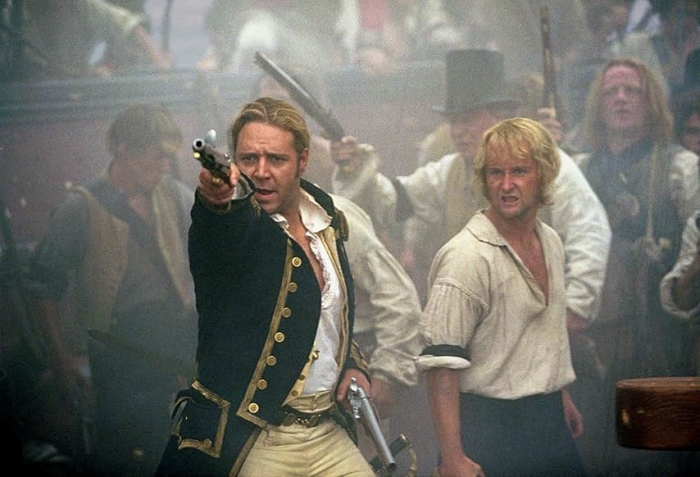
Pacing and Tone
The pacing is deliberate, and this was perhaps the film’s biggest hurdle upon release. It moves with the rhythm of life at sea—sometimes still, sometimes stormy, always unpredictable. For viewers expecting constant action, this can be jarring. But in retrospect, especially through today’s lens of blockbuster fatigue, the film’s meditative pace feels like a gift.
Master and Commander respects your attention. It builds tension slowly, invests in its characters fully, and trusts that its audience is mature enough to appreciate the ebb and flow of a sailor’s life. When the action does arrive—whether it’s a surprise ambush, a treacherous rounding of Cape Horn, or a chaotic battle on the Acheron—it lands with greater impact because the groundwork has been so meticulously laid.
Contemporary Analysis and Legacy
In the years since its release, Master and Commander has aged like fine rum. What was once seen as overly serious or slow now feels like a bold departure from franchise formula. It has grown into a cult classic, championed by historians, filmmakers, and fans who admire its craftsmanship and restraint. In the current cinematic climate, where IPs are milked dry and historical epics are rare, Weir’s film stands taller than ever.
There’s renewed interest in the source material and ongoing murmurs of a prequel or series adaptation. Yet part of the film’s lasting appeal is its singularity—it doesn’t try to set up a franchise or a sequel. It’s complete, self-contained, and all the more powerful for it.
Final Thoughts
Master and Commander: The Far Side of the World remains one of the most accomplished films of the early 2000s—a rare blend of intellectual rigor and visceral drama. It may not have conquered the box office, but it conquered time. Twenty-plus years on, its sails are still full.
For those who missed it, now’s the time to climb aboard. For those who loved it, it only gets better with each voyage.
Video 





Encoding: HEVC / H.265
Resolution: 2160p
Aspect Ratio: 2.40:1
HDR: Dolby Vision
Layers: BD-66
Clarity/Detail: Culled from multiple sources, this “meticulous” restoration of Master and Commander was not sourced from just the original negative, and it shows just a bit. There are moments of great detail and a few instances of DVD-like softness within the transfer. These moments are incredibly brief and nothing to gripe about beyond a spare mention. The overall look of the film is on the darker side, so be prepared to watch this film in a darker room, so as not to lose the image in the brightness of a daytime setting. Film grain remains intact but very subtle, with detailing mostly solid and especially striking on ship interiors, costuming and on ocean waves and ripples.
Depth: Depth of field is often a beautiful thing here. Seeing the vast camera angles and movement, casting beautiful focus on the incredible ship work and exceptional ocean locale makes the scale of the film equal parts grand and small depending on the scenes. Foreground shots look clean and tight with backgrounds appearing correctly when in focus or pulled out of focus. Overall a natural look for this category.
Black Levels: Black levels go to the edge with the darkness of the transfer, but with no bleeding crush to speak of.
Color Reproduction: The color spectrum is on the drab, washed out side per style of the film. This is no HDR showcase, but it was never meant to be in the first place. No gorgeous ocean blues here. This film is the anti-Pirates of the Caribbean, so don’t go into the film looking for vibrancy.
Skin Tones: Flesh tones are natural, not looking smeary or retooled with any cleanup or filtering.
Noise/Artifacts: None
Audio 




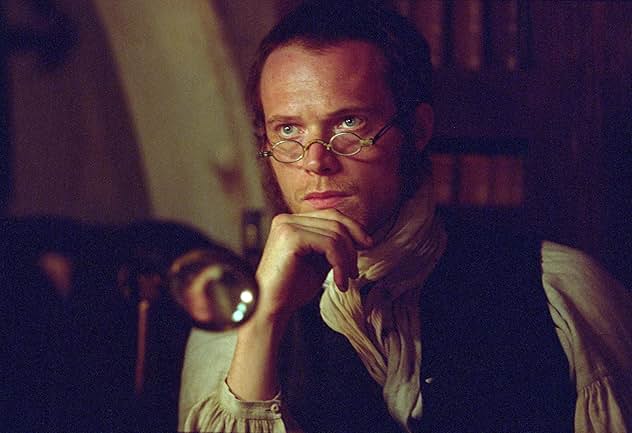
Audio Format(s): English: Dolby Atmos, Spanish, French and German Dolby Digital 5.1, Czech Dolby Digital 2.0
Subtitles: English SDH, French, Spanish, German, Danish, Dutch, Finnish, Norwegian, Swedish
Dynamics: Master and Commander even on DVD was a home theater demo film. Publications like Sound & Vision were still using the lossy audio track on that vintage disc to test equipment until recently, and now, the film has finally got a new mix. While there are a few missed opportunities to be mentioned, the new track does offer some new sonic dimensions that make for a new and wonderful listen. Music, surround activity and bass response all deliver with special attention paid to the constant use of surround channels both traditional and height. Dialogue is on the quieter side in some scenes, but adjusting your volume can sometimes be a necessity in even the most exceptional mixes.
Height: The height channels bring the creakiness of the ship, the surrounding nature of the vast ocean and the ambience of the land and sea around the characters and their huge boat. Missing and surprisingly so, are the footsteps once heard overhead in previous mixes of the film’s audio. Those are now locked in standard surround, and it’s sort of awkward, but again, a minor gripe.
Low Frequency Extension: Bass is rendered with ferocity for cannon explosions that dig deep in battle. I have read that some feel as if the bass is lacking from previous mixes, but to my ears, the bass sounds great.
Surround Sound Presentation: Surround channels work to enhance the ocean sounds, boat noise, and island noises once the crew de-boats for a while.
Dialogue: Dialogue has some issues with volume at a few moments here and there, but nothing that a few clicks of the volume buttons won’t cure.
Extras 




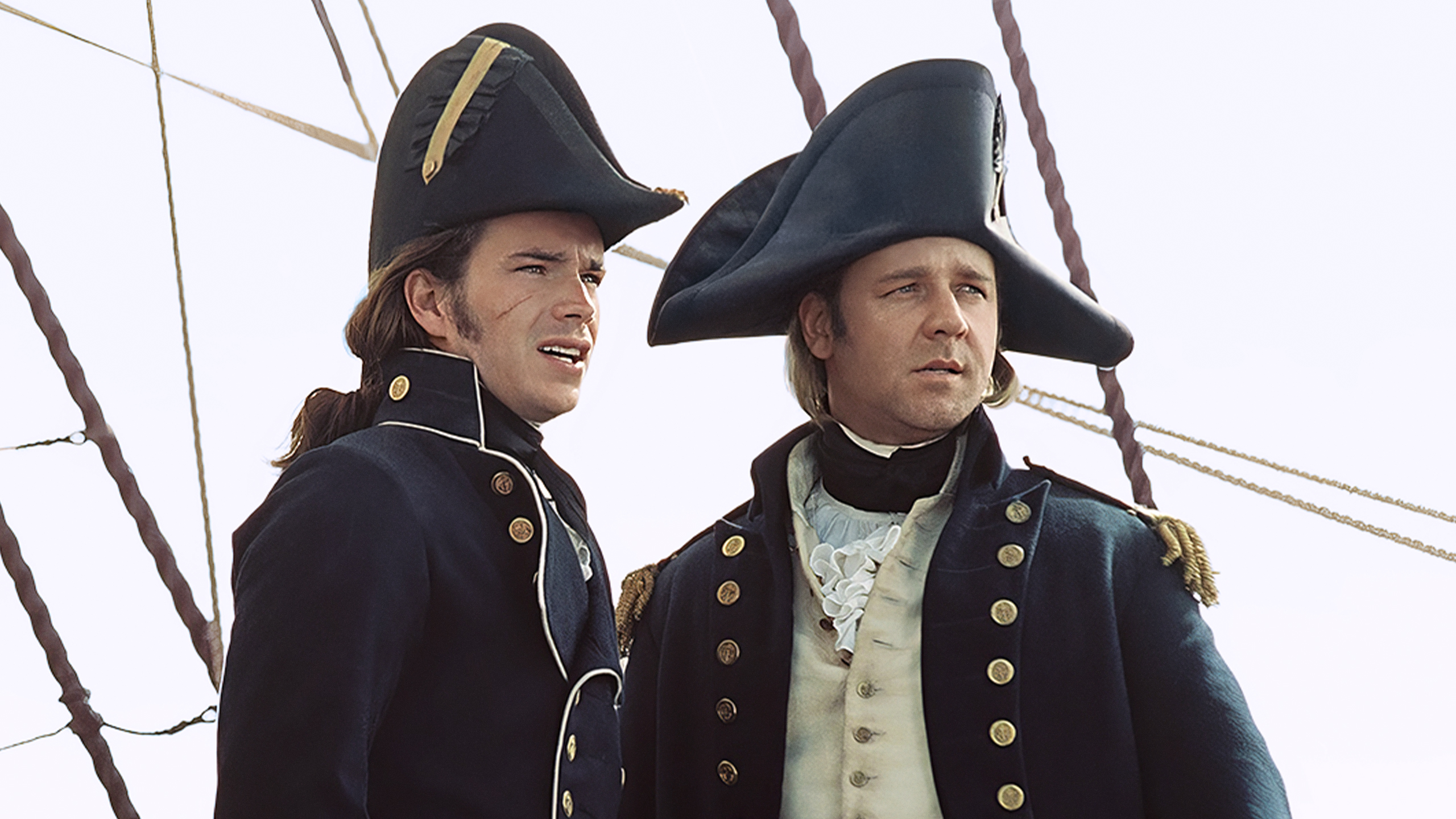
Master and Commander debuts in the 4K format exclusively in a Steelbook. Extras are culled from previous releases, while there are quite a few missing from previous releases. What’s here is not very informative, but it appears to be what came from the previous Blu-ray release, and what’s missing came from a DVD collector’s edition. I’m not sure why these DVD-era extras are missing, but I’m sure fans of the film will be slightly disappointed by their omission.
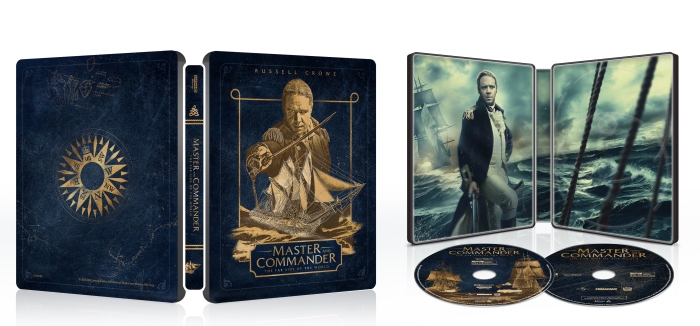
Bonus Features:
- Deleted Scenes
- Historical and Geographical Trivia Track
- Pop Up Map
Summary





Master and Commander has been a fan favorite since 2003. While it isn’t as it was advertised, the film is an epic tale, told with great style, and phenomenally well acted. Peter Weir delivered another solid film in his catalog with this underserved slow burn. Now in 4K, we have it looking and sounding better than ever, and newcomers finally have a reason to discover the film in the best way it’s looked since it was in the theater!
Buy Master and Commander – The Far Side of the World HERE
